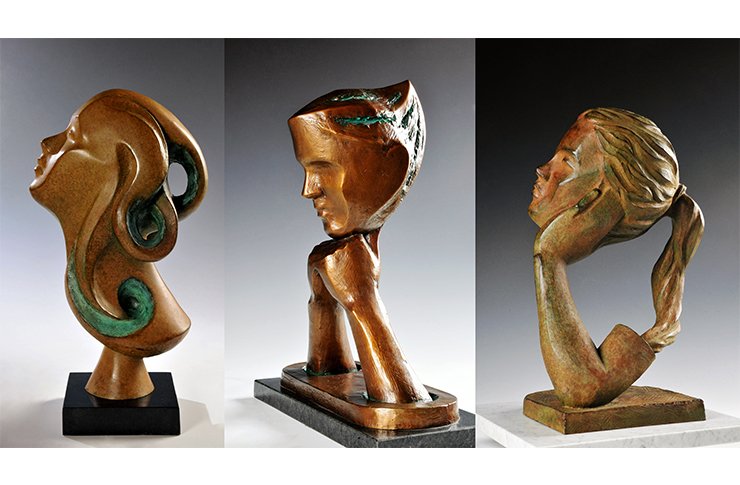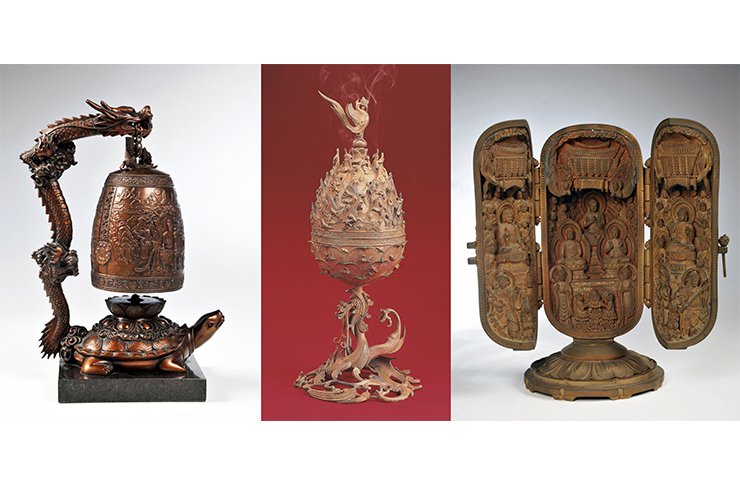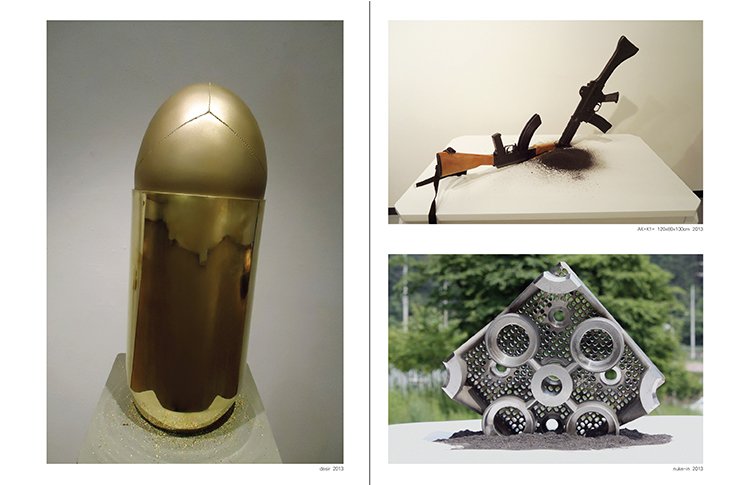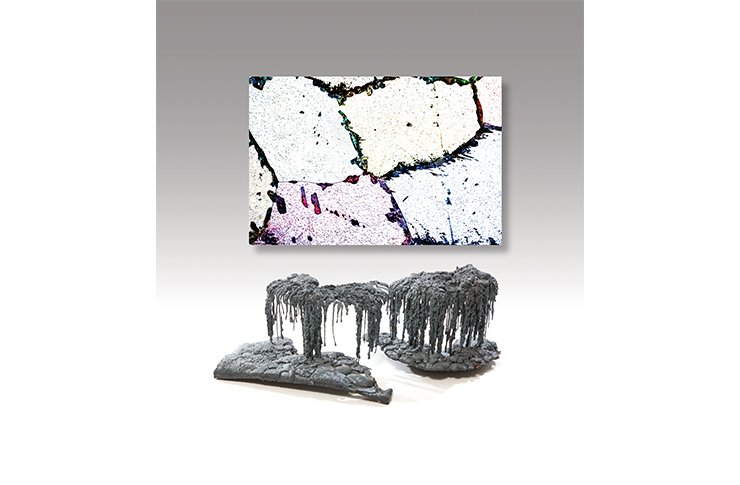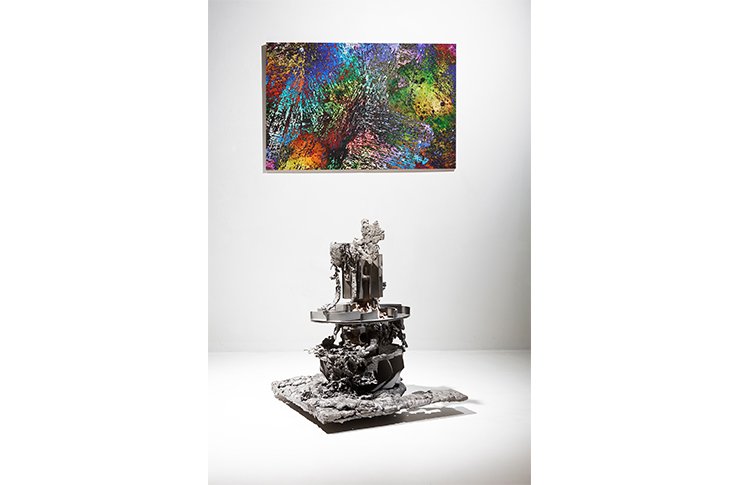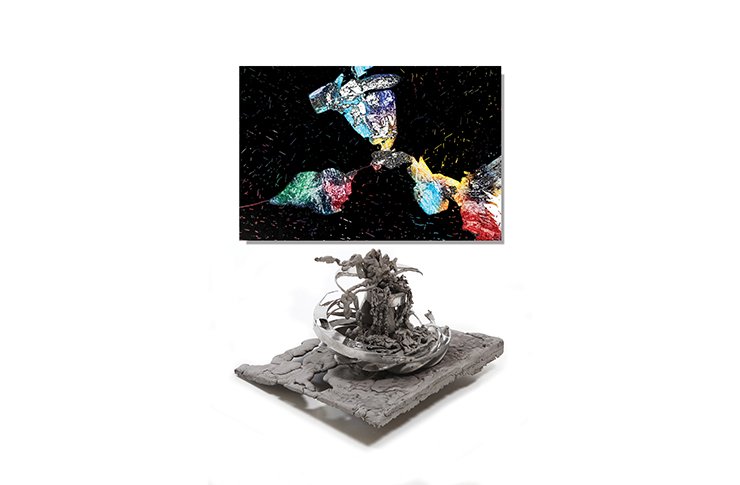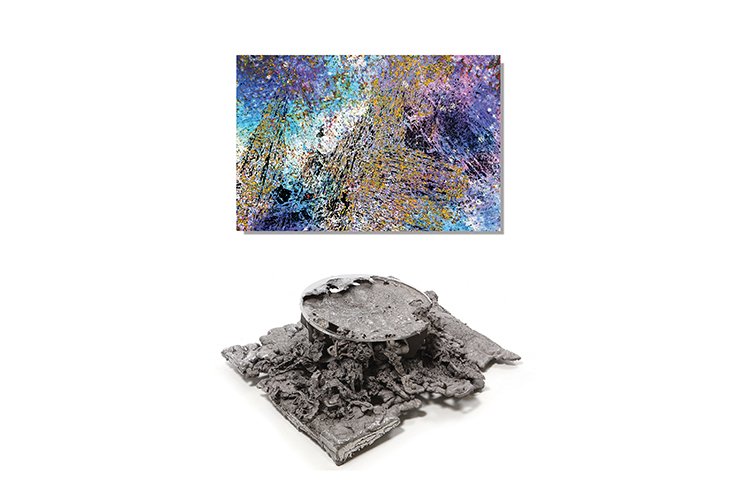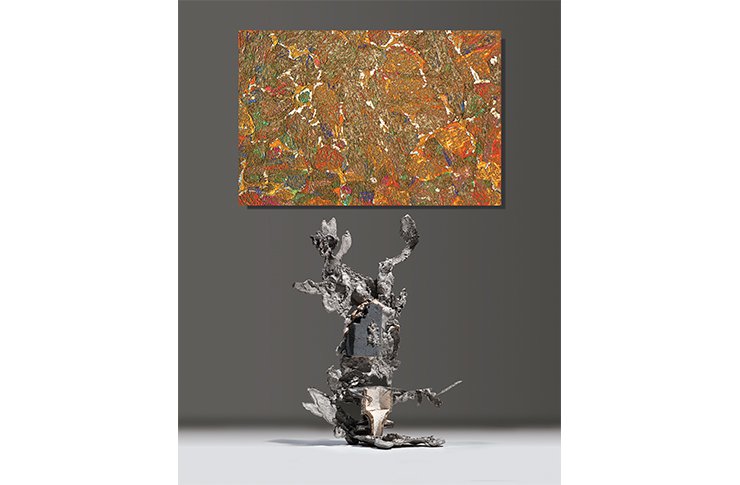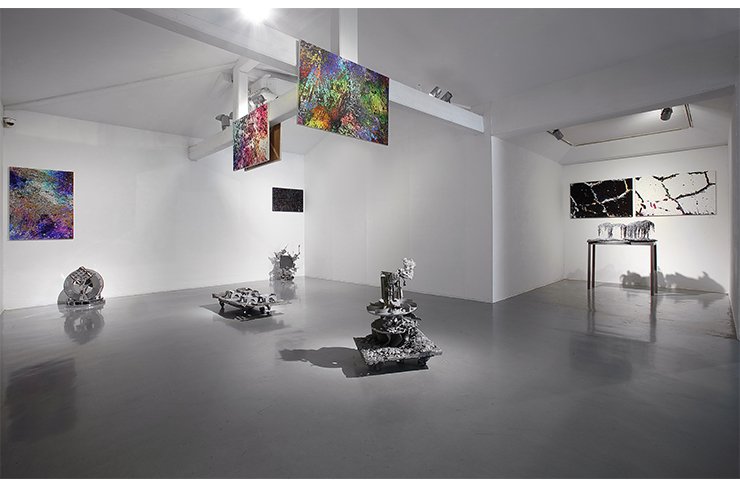조각가 인명사전
- HOME
- 조각가 인명사전
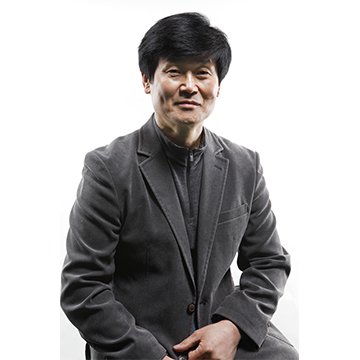
양홍섭
작가 작품
작가 프로필
홍익대학교 미술대학원 조각과 졸업
국립서울과학기술대학교 조형대학 졸업
개인전
2018 제6회 개인전 (Grimson 갤러리)
2016 START ART SEOUL, Archive전 1987 ~1996's (예술의 전당 한가람미술관)
2015 제3회 개인전 (홍익대학교 현대미술관)
2015 국제조각페스타 (예술의 전당 한가람미술관)
2014 제2회 개인전 (성남아트센터 미술관 본관)
2012 제1회 개인전 (Kosa space 갤러리)
단체전
한국조각가협회: 한국현대조각의 아카이브전 1988 ~1990's (Kosa space 갤러리)
한국현대조각의 아카이브전 1994 ~1996's (Kosa space 갤러리)
이태리 밀라노 세계엑스포기념 「한국미술의 오늘전」 (이태리 Villa Clerici Milano미술관)
서울현대미술 호주 시드니전 (호주 빈센트 Art Gallery)
서울+LA 현대미술교감초대전(미국 LA한국문화원)
Sincerity 14+14 한. 일 작가교류전 (일본도쿄 한국문화원)
한, 중 현대조각교류전 (공평갤러리) 한. 중 소통과 흐름전 (아라아트센터)
서울미술협회 초대작가전 (한전아트센터 갤러리)
Chicago art project (주미 Chicago 문화회관)
한국전력공사 창립115주년기념 초대작가전 (한전아트센트 갤러리)
성남조각가협회전 (암웨이미술관) 서울미술협회전 (서울시립미술관 분관)
성남미술협회전 (성남아트센터 미술관본관) 그 외 다수
1974년 조각입문
현재: 한국조각가협회, 성남조각가협회, 한국미술협회, 서울미술협회, 성남미술협회회원 예술세계 대표
국립서울과학기술대학교 조형대학 졸업
개인전
2018 제6회 개인전 (Grimson 갤러리)
2016 START ART SEOUL, Archive전 1987 ~1996's (예술의 전당 한가람미술관)
2015 제3회 개인전 (홍익대학교 현대미술관)
2015 국제조각페스타 (예술의 전당 한가람미술관)
2014 제2회 개인전 (성남아트센터 미술관 본관)
2012 제1회 개인전 (Kosa space 갤러리)
단체전
한국조각가협회: 한국현대조각의 아카이브전 1988 ~1990's (Kosa space 갤러리)
한국현대조각의 아카이브전 1994 ~1996's (Kosa space 갤러리)
이태리 밀라노 세계엑스포기념 「한국미술의 오늘전」 (이태리 Villa Clerici Milano미술관)
서울현대미술 호주 시드니전 (호주 빈센트 Art Gallery)
서울+LA 현대미술교감초대전(미국 LA한국문화원)
Sincerity 14+14 한. 일 작가교류전 (일본도쿄 한국문화원)
한, 중 현대조각교류전 (공평갤러리) 한. 중 소통과 흐름전 (아라아트센터)
서울미술협회 초대작가전 (한전아트센터 갤러리)
Chicago art project (주미 Chicago 문화회관)
한국전력공사 창립115주년기념 초대작가전 (한전아트센트 갤러리)
성남조각가협회전 (암웨이미술관) 서울미술협회전 (서울시립미술관 분관)
성남미술협회전 (성남아트센터 미술관본관) 그 외 다수
1974년 조각입문
현재: 한국조각가협회, 성남조각가협회, 한국미술협회, 서울미술협회, 성남미술협회회원 예술세계 대표
작가 노트
한국 사회에서 베이비붐 세대는 굴곡이 많은 세대인 것 같다. 74년 조각을 업(業)으로 입문하여 45년 동안 목조, 소조, Wax조각, Monument 작업등 다양한 조각을 배우면서 인생의 고비 고비마다 쉼 없이 달려오다 보니 어느덧 회갑년이다. 사회적으로 개인적으로 변혁과 변화의 격동의 세월과 고난을 겪으면서 파란만장한 내 삶 자체가 한편의 조각사이자 현대사다.
세라믹 셸 몰드(Ceramic Shell Mold) 틀을 깨서 탄생된 작품의 Inside는 2차원의 광학미세조직 사진작품이고 Outside는 3차원의 주조조각 작품으로 전시 타이틀을 「틀을 깨다 Breaking the Mold / Inside/ Outside」로 하였다. Inside 사진작품은 Outside 주조조각 작품의 미세조직사진이고 기존 조각의 틀에서 벗어난 사진 작품과 주조조각 작품은 신소재 재료를 이용하여 2차원과 3차원의 작품세계를 동시에 기획하여 전시한다.
Breaking the Mold 주조조각을 시작한지 올해로 만 10년이 되었다. 작품제작과정에서 초내열 합금인 항공기부속품, 원자력발전소와 선박에 쓰이는 신소재 재료 그리고 기계부속품 재료인 스텐레스 스틸계열의 SUS300계열과 400계열, SCM계열 415, 420과 탄소강계열인 S15C, S45C과 청동 SiCu, SnCu 브론즈 등 주조합금성분에 따라 다양한 재료를 활용하여 작품을 제작하였다. 신소재의 다양한 재료들은 고주파 유도로에서 1700-1800도 쇳물을 녹여 하나로 융합되어 새로운 특성을 지닌 전혀 다른 금속으로 태어난다. Ceramic Shell Mold틀 안에 쇳물을 붇고 쇳물의 다양한 합금성분에 따라 쇳물과 Ceramic Shell Mold 온도에 따라 쇳물의 성질이 돌아올 때 상황에 따라 정확한 time‘액상선 온도’에서 틀을 깨뜨린다. 틀을 깨기 이전까지는 한 치의 오차도 없이 Ceramic Shell Mold를 제작하고 틀이 깨지면서 새빨간 쇳물이 분출되어 흘러내린다. 금속 물성의 성질을 이용한 마티에르와 특성을 지닌 우연한 형상의 주조조각 작품이 탄생한다.
주조조각 과정에서 쇳물을 녹이는 것은 조각에 대한 개념을 녹이고 나의 지난 과거를 녹이고, 우리 내면의 고정관념과 인간의 오만과 편견을 녹이고, 사회의 불합리한 것을 녹여 새로운 질서를 추구하기 위해서 틀 안에 쇳물을 붇고 감정이입을 시켜 틀을 깬다. 틀을 깨는 것은 치열한 삶의 과정이며 직접적이고 은유적인 메시지가 담겨있다. 나의 삶의 궤적에 차곡차곡 쌓아온 얘기들의 언어들이다. 틀 안에 있는 者들은 틀 밖을 모른다. 틀 밖에서 틀 안을 보라. 콜린 윌슨(Colin Wilson)은 “아웃사이더는 깨어서 혼돈을 본 고독한 인간” 이라고 표현한다. 알은 새가 창조되기 전의 혼돈에 불과한 것이다. 우리는 여전히 이 세상의 보지 못한 부분을 알지 못하고 가까이 있는 것은 느끼지 못하면서 살아가고 있는지 모른다. 틀을 깨는 것은 우리 내면의 고정관념들의 틀을 부수어야 만이 새로운 것을 창조해 낼 수 있다. ‘Breaking the Mold’의 ‘틀을 깨다’의 작품은 나 자신의 얘기를 작품에 반영한 것이다. 지난과거 Outsider의 삶이 작품을 하는데 모티브가 되고 내안에 감추어져 있는 보물 상자를 열어 하나하나 소중히 꺼내는 기분이다.
Outside 촉각적인 주조조각 작품은 의식의 흐름 속에 무의식의 흐름이 Inside 시각적인 사진 작품은 무의식의 흐름 속에 의식의 흐름으로 Inside/Outside 개념은 상반될 수도 서로 다른 개념 일수도 있지만 떼려야 뗄 수 없는 서로 공존관계이다. 모리스 메를로-퐁티(Maurice Merleau-Ponty)는 감각의 물질성에 의한 예술의 세계에서 “가시성과 촉가성의 관계에 대해 가시적인 것과 가촉적인 것, 가촉적인 것과 가시적인 것 간에 이중적이고 교차되는 교환이 있다. 두 부분은 전체적인 부분들이지만 서로에게 포개진다고 해서 서로를 지우는 것이 아니다.”라고 한다. 우리 삶의 경계는 의식의 흐름과 무의식의 흐름, 열림과 닫힘, 닫힘과 열림, 안과 밖, 밖과 안이 함께하며 공존하는 형식이다. 양자 물리학에서는 안과 밖이 같다. 안과 밖이 없다. 똑같다. 라고 한다.
물리학에서의 색은 무엇일까? 주조조각 작품은 제작과정에서 쇳물이 녹을 때 처음에는 금속고유의 색이 붉은색에서 불그스름한 색으로 온도가 점점 높아지면서 흰 노란색에서 하얀색으로 변해가고 빛의 세기와 색은 온도에 의해 영향을 받는다. 다양한 파장과 수많은 빛들의 방출은 뇌가 감각기능으로부터 표현하기 힘든 다양한 혼합한색이다. 그 빛들의 스펙트럼은 빛나는 물체의 주조조각 작품색이다. 빛과 물체의 색이 공존하듯 Inside의 사진작품 빛의 색은 Outside주조조각 작품 빛의 색이듯 서로 하나이다.
Inside사진작품은 Outside주조조각 작품의 금속조직사진이듯 사람의 유전자도 고유한 모양이 있고 개인의 유전자 속에 숨어있는 능력이 있다. 금속도 재질과 합금 비율에 따라 각기 다른 자기만의 고유의 조직이 있다. Inside작품은 Outside작품 금속의 물성과 성질을 파악하여 그 내면까지 꿰뚫어 광학현미경으로 들려다 보면 알 수 없는 세계가 펼쳐진다. Inside 2차원 사진작품은 미세조직에 Computer 작업을 하여 내면의 보이지 않는 마음까지 내 안의 나를 깨워 즐거움과 아름다운 생각 그리고 밝고 화려한 색감으로 형형색색 다채로운 색으로 표현하였다. 내적으로 눈을 뜨면 나의 속마음이 있듯이 사물인 금속의 미세조직 속에도 속마음이 있다. 금속으로 된 작품이지만 쇳물이 녹을 때 다양한 빛과 색을 방출하듯 따뜻한 마음일거야! 나의 마음을 감정이입해서 금속 조직 속으로 들어가 보면 아름답고 화려한 색감은 인간의 마음과 다를 게 없다. 주조조각 작품의 속마음도 나의 마음의 다양한 빛깔과 색감이 감정이입 되어 보인다. 마음을 통해 들어오는 눈부신 금빛 햇살, 위성이 떠가는 스펙트럼의 영롱한 풍경들, 어둠속의 별빛처럼 빛나는 광활한 우주 속으로 끝없이 유영하며 다양한 차원의 세계와 또 다른 환상의 세계로 끝없는 상상의 나래를 펴본다. 2차원 미세조직사진작품의 무한한 창조 공간속으로 신비로운 미지의 세계가 펼쳐진다. 생텍쥐페리(Antoine de Saint-Exupéry)는 “가장 중요한 것은 마음에 보이지 않는다. 가장 중요한 것은 마음에 있다.”라고 하였다. 인간의 내면속의 마음은 누구나 자기만의 아름다운 빛깔과 색감이 있다. 내 안에 나를 찾기 위해 Colorful하게 표현하였다. 내 마음속에 같음과 다름 모두 마음에 자리 잡고 있다는 것을 느낀다. 내가 꿈꾸는 이상세계는 내 마음의 세계다.
그 동안 조각하면서 살아온 삶이 파노라마처럼 스쳐 지나간다. 죽음에 대한 트라우마는 수시로 엄습해 온다. 언제 어디서 뇌졸중과 교통사고가 또 찾아올지 모른다는 사실을 깨닫고 살아가니 삶이 덧없고 허망하게 느껴질 때가 있다. 생과 사의 접점에서 삶을 되돌아보면 힘들었던 지난 과거의 삶이 하나하나 소중하지 않은 것이 하나도 없다. 인생은 물 흐르듯 지나가는 것이 아니라 삶이 굽이굽이마다 맺히고 소용돌이 치게 마련이다. 크거나 작거나 맺히는 순간 힘든 것은 당연하다. 죽음이란 극한상황에 이르렀을 때 깨닫는 삶의 참된 가치를 진지하게 추구하게 되었다. 삶을 위해 오늘도 죽으면서 다시 태어난다. 공자는 “삶도 모르는데 어찌 죽음을 알겠느냐?” 삶과 죽음은 별개가 아니라 하나의 이치라는 것을 알 수 있을까?
작품은 지난 45년 동안 조각하면서 살아온 삶 위에 놓여 진 여정 속에 있다. 인간은 누구나 한 번 뿐인 소중한 삶 속에 사연이 있고 의미가 있는 자신만의 세계가 있다. 작품제작은 생각을 녹여내는 사고의 과정이며 인생의 경험을 통해 자신의 삶을 담는 행위다. 작품도 끊임없이 자기 자신을 찾아가는 여정에 있다. Inside 2차원의 내적인 미세조직사진작품과 Outside 3차원의 외적인 주조조각 작품은 내면세계의 표현이다. 끊임없이 나의 변화를 추구 하기 위해서 파괴하고 창조하면서 새로운 세계를 찾아 나선다. 작품이란 자기 철학과 사상이 담겨져야 된다. 내면의 세계와 삶을 작품에 담아 내 삶을 조각하다.
평론
지각과 연상, 그리고 반(反)개입
윤진섭(미술평론가)
Ⅰ. 양홍섭은 특이한 경력의 소유자이다. 그는 10대 중반에 조각 분야에 뛰어들어 40여 년에 걸친 각고의 노력 끝에 이 분야에서 독보적인 장인의 위치에 올랐다. 미술계에 잘 알려진 정밀주조공장의 경영자이기도 한 그는 젊은 시절에 품었던 작가의 꿈을 이루기 위해 늦은 나이에 미술대학과 대학원 과정을 마쳤으며, 현재 주조의 실제와 이론을 겸비한 조각가로서 정열적으로 활동을 하고 있다.
양홍섭의 예술과 삶을 이해하기 위해서는 위의 사항이 전제되지 않으면 안 된다. 왜냐하면 작품을 주물공장에 맡기는 대부분의 조각가들과 는 달리, 그는 오랜 세월 갈고 닦은 주조에 대한 경험과 지식을 바탕으로 작업을 하고 있기 때문이다. 그만큼 그의 작품은 정밀주조에 따른 까다로운 공정은 물론 이에 따른 기술적인 문제에 대한 섬세한 이해와 실력을 바탕으로 전개되고 있다.
Ⅱ. 이번 개인전에서 양홍섭은 기존의 정밀 주조 작업에 사진을 덧붙이는 새로운 스타일의 작품을 선보인다. 신소재 재료를 비롯하여 다양한 합금 재료로 이루어진 초내열 합금인 항공부속품의 재료를 활용하여 기존의 작업에 서로 다른 금속의 조직을 광학현미경으로 확대, 이의 사진을 컴퓨터상에서 미세조직에 칼라를 덧입히는 작업을 해 만든, 마치 회화작품을 방불케 하는 사진을 병치한다. 좀 더 자세히 설명하자면, 이번에 출품하는 주조조각 작품과 사진작품이 동시에 전시되는 것이다. 광학현미경에 비친 서로 다른 금속의 미세한 조직은 한 폭의 추상화 처럼 아름다워 보이는데, 양홍섭은 컴퓨터의 프로그램을 이용하여 이 미세한 이미지들에 색채를 가해 가일층 화려한 세계를 창출한다. 이 미시세계를 추상의 세계로 부를 수 있을까? 그것은 오히려 실재의 세계라 불러 마땅하다. 현미경에 나타난 미시 세계는 실제로 존재하는 금속의 조직이기 때문이다. 양홍섭은 이번 작품을 통해 우리가 추상이라고 부르는 것이 실은 허구가 아니라, 세상에 실제로 존재하는 ‘실재’임을 입증해 보여준다. 그의 이러한 시도가 의미 있는 이유는 그것이 회화나 사진으로 제시될 때와 달리 주조조각으로서 구체적인 작품과 병치돼 전시되고 있기 때문이다.
그런 관점에서 봤을 때, 양홍섭이 이번 전시 타이틀의 부제를 ‘안과 밖(Inside/Outside)’으로 정한 것은 매우 타당해 보인다. 그것은 안에서 본 세계가 바로 밖에 존재하는 주조조각의 내용이기도 하기 때문이다. 그것은 사물의 존재 양태로서의 ‘안과 밖’인 것이다.
그렇다면 양홍섭이 제작한 ‘주조조각으로서의 작품’은 과연 무엇인가? 그것은 또한 현대조각의 지평에서 어떤 의미를 지니고 있는 것일까? 이를 알기 위해서 우리는 먼저 작품의 형태를 살펴보지 않으면 안 된다. 양홍섭은 이미 2012년에 연 첫 개인전에서 다수의 주조조각 작품을 선보인 바 있다. 2014년에 가진 두 번째 개인전 역시 마찬가지였으며, 그러한 경향은 지금도 지속되고 있다. 앞서 나는 ‘제작’이라는 단어를 썼지만, 양홍섭 작품의 경우에 과연 ‘제작’이라고 할 수 있을까 하는 의구심이 드는 것도 사실이다. 왜냐하면 양홍섭은 항공기 부품에 쓰이는 신소재 재료를 선택한 뒤, 이를 섭씨 1700-1800도의 고온에 녹여 용액이 자연스럽게 흐른 상태에서 굳히고 있기 때문이다. 여기서 볼 수 있는 것은 작가의 ‘최소한의 개입’이다. 금속의 용액이 자연스럽게 흐르다 굳어져 만들어진 형상이 바로 양홍섭의 주조조각 작업 일진대, 우리는 여기서 다다(Dada) 이후 익숙한 현대미술의 ‘우연성’의 개념을 접하게 되는 것이다. 그리고 이를 좀 더 확대 해석하자면 모더니즘의 선형적이며 환원적인 관점과는 다른 포스트모더니즘의 ‘뿌리줄기(Rhizome)’와도 같은 ‘예측불가능성’을 만나게 된다. 즉 어느 방향으로 흐를지 모르는 비정형의 세계가 바로 양홍섭의 주조조각 작품의 특징인 것이다. 주지하듯이, 섭씨 1700-1800도의 고온에서 녹은 금속의 용액이 흐를 때 그 방향이나 나타난 결과로서의 모습은 자연조건에 따른 필연일 수 있지만, 조각가의 의도나 손길이 개입되지 않았다는 측면에서 보면 ‘우연’인 것이다. 따라서 물, 불, 공기, 온도, 습도 등 자연이 조각품을 만든다는 관점에서 볼 때, 양홍섭의 조각은 차라리 ‘자연의 조각’이라고 불러도 무방할 듯 싶다. 이와 관련하여 양홍섭은 작업노트 속에서 다음과 같이 적고 있다.
“모더니즘(Modernism)과 고전물리학이 일맥상통하고, 구축적이고 환원주의적이며, 선형적인 단순한 유클리트 기하학이었다면, 포스트모 더니즘(Postmodernism)과 현대물리학에서는 해체적이고 다원주의적이며, 비선형적인 복잡한 프랙탈 기하학이라고 할 수 있다.”양홍섭의 이러한 현대조각에 대한 이해는 ‘조각예술의 재구축(Reshaping the art of sculpture)’이라는 개념을 낳았다. 조각에 대한 이러한 표현은 조각가로서 양홍섭의 야심을 은연중 보여주는 것이리라. 물론 가공되지 않은 ‘날 것’으로서의 조각의 선례는 그가 최초는 아니지만, 정밀 주조에 대한 해박한 지식과 경험을 지닌 그가 보여주는 세계는 나름대로 세계의 철리(哲理)를 꿰뚫는 예리한 통찰력을 드러내고 있다. 다시 그의 발언을 경청해 보도록 하자.
“작품에 나타나는 순리적 언어는 우리의 현실에 내포된 불신과 갈등의 구조, 자연적이지 못하고 인위적인 면들, 자기 자신과 잘못된 사회적 구조의 틀을 깨뜨림으로써 새로운 세계, 더 나은 세계로 재탄생할 수 있는 수사학적 의미를 담고 있다.”
‘Reshaping’은 이미 형성된 어떤 것(shaping)을 다시 빚는 것을 의미한다. 따라서 상태 A에서 상태 B로의 이동에는 어떤 물리적인 힘이나 정신적인 반성을 통한 계기가 전제된다. 그것은 개인의 반성(reflection)일 수도 있고, 사물의 변형이나 사회의 개조일 수도 있다. 따라서 양홍섭이 신소재 재료를 활용하여 작업하는 행위는 물리적인 오브제의 ‘Reshaping’을 통해 자신 혹은 사회에 대한 메타포로서의 반성적 메시지가 된다. 주지하듯이, 조각과 같은 예술작품의 제대로 된 감상은 눈에 보이는 물리적 형태를 넘어서서 그로부터 어떤 메시지를 감상 자가 끌어낼 때 완성된다. 이 점이 단지 심미적 만족에만 그치는 감상과 다른 점이다. 이는 언어학의 일반의미론에서 알프레드 코르집스키 (Alfred Korzpbski)가 예로 드는 ‘추상 사다리’처럼 단어의 추상화(抽象化)가 심할수록 대상의 가시적 실체가 사라지면서 점차 개념화되는 이치와도 같다.
양홍섭의 작업에서 또 하나 눈에 띄는 것은 ‘해체’이다. 리좀적인 속성과 함께 드러나는 해체적인 특징은 그의 작업을 포스트모더니즘의 문맥에서 해석할 수 있는 비평적 근거(criteria)가 된다. 그 자신의 설명에 의하면, “작품들은 청동 뿐만아니라 SUS 계열과 Carbon Alloy 계열을 이용한 정밀주조, 세라믹 셸 캐스팅 기법”에 의존한 작품들이 주류를 이루는데, 이 재료들은 섭씨 1700-1800도의 고온에서 새빨갛게 녹은 쇳물로 변한다. 그 쇳물이 “세라믹 셸 몰드에서 터져 분출돼 흘러내리면서 고체 상태로 서서히 변해 점차 회색조의 무채색”을 띠게 되는 것이다. 양홍섭의 항공기 부품을 이용한 주조조각 작품에서 극히 일부는 본래의 모습을 간직한 반면, 녹아 흘러내려 자연스런 형태를 유지한 커다란 덩어리는 해체된 모습을 보이는 특징을 눈여겨보도록 하자. 관객들은 양홍섭의 작품들을 보며 서있는 사람이나 폐허로 변한 건물의 잔해, 또는 머리를 풀어헤친 버드나무를 연상할 수도 있다. 그러나 그것은 단지 오성에 의존한 지각작용이 관객으로 하여금 그렇게 보도록 유도했을 뿐, 사물은 오로지 사물에 지나지 않는다. 본래의 항공기 부품, 즉 하나의 기성품을 해체함으로써 전혀 새로운 문맥으로 전치시키는 양홍섭의 조각적 기법은 특유의 초현실적 풍경들을 낳는다. 그리고 다소 상투적인 표현을 빌면, 그것들은 한계에 도달한 현대문명의 폐해에 대한 완곡한 은유이다. 그는 그러한 풍경을 야기한 국면을 가리켜 ‘틀을 깨다(Breaking the Mold)’라고 표현한다.
그리하여 양홍섭은 정형의 세계에서 비정형(informel)의 세계로 나아가고자 한다. 그가 이용하는 세라믹 셀 몰드 기법은 이 두 세계를 매개 하는 매개항이며, 그것을 촉매로 하여 ‘바슐라르’적 의미에서 물질적 상상력에 기반한 연금술적 변화가 일어난다. 예술가의 위대한 점은 어떤 변화를 통해 물질로 하여금 이전과는 다른 말을 관객들에게 건네게 한다는 것일 게다. 양홍섭의 경우에 있어서 그것은 건물의 잔해, 혹은 도시의 폐허나 머리를 풀어헤친 버드나무, 도시의 고독한 인간군상으로 표상된다. 도대체 한 덩어리의 항공기 부품에 지나지 않는 사물을 가지고 어떻게 저런 풍경을 연출한단 말인가? 그 이유는 전적으로 작가의 불간섭, 좀 더 구체적으로 말하면 물질적 상상력을 위한 대리자로서 작가의 반(反)개입의 역설을 그러한 풍경이 보여주고 있기 때문이다. 인간의 지각과 연상작용을 둘러싼 신비에 양홍섭은 또 하나의 시금석을 보태고 있다.
Ⅲ. 제30회 한국조각가협회 주최의 아카이브전에 양홍섭은 80년대 인체구상작품들과 31회 90년대의 정교한 조각 작품들을 전시한 바 있으며, 홍익대학교 현대미술관에서는 미술대학원 청구 개인전에 오브제와 자신이 제작한 조각품의 일부를 간 작품과 함께 전시, 주목을 받은 바 있다. 좌대 위에 놓인 작품들 밑에는 미세한 쇳가루들이 흩어져 있다. 원자력발전소 설비부품이나 AK, K1소총, 로댕의<생각하는 사람>을 모사한 이 작품들은 반전(소총)이나 반핵(원자력발전소 설비 부품), 남근 중심적 남성성에 대한 비판(페니스처럼 생긴 커다란 총알)을 의미 하는 것으로써, 모두 조각의 개념에 대해 다시 생각하게 하는 것들이다. 기성의 사물이나 혹은 작가가 직접 주물을 떠 만든 이 작품들은 작가의 반복적인 노동에 의해 소멸된다는 점에서 세상에 태어난 것은 언젠가 소멸된다는 상징적인 의미를 띠고 있다. 그것은 전쟁이나 반핵, 또는 남성성 등등 세상을 지배하는 거대 권력에 대한 비판인 동시에 로댕의 <생각하는 사람>의 모작을 간 행위에서 보듯이 명작에 대한 부정 혹은 절대적인 가치에 대한 부정으로 해석된다.
앞의 예에서 볼 수 있듯이, 조각에 대한 양홍섭의 입장과 태도는 개념적인 측면이 짙다. 그러나 그는 또한 삶과 죽음과 같은 인간의 근원 적인 문제들을 주제로 한 일련의 작품들을 제작, 전시한 바 있다. 축소된 모형을 전시한 <인생의 방>은 신산한 삶을 겪은 양홍섭이 인생을 4개의 방에 비유한 것이다. 흰색, 검정, 노랑, 그리고 자개의 영롱한 무지개색 등으로 꾸며진 4개의 방에는 서로 통하는 문이 있다. 이 모형 작품은 갤러리에 4개의 방을 설정할 목적으로 만든 것으로 이 작품이 구현되면 사람들은 직접 방을 돌아다니며 작품을 감상할 수 있게 될 것이다. 여기서 4개의 방은 탄생에서 죽음에 이르는 인생의 과정에 대한 비유이다. 작가의 설명에 의하면 흰색의 방은 ‘불안의 방’으로 정신적 충격으로 인하여 머릿속이 하얗게 될 때 느끼는 충격과 공포의 방이다. ‘황금의 방’을 의미하는 노란색 방은 가족애를 비롯하여 사랑, 정신적 안정과 같은 자기만족의 방이다. 물질보다는 정신세계를 나타낸다. 검정색 방은 절대침묵과 어둠의 방이다. 관객들은 이 방에 서 인간이라면 누구에게나 찾아오는 죽음을 성찰하게 될 것이다. 끝으로 무지개의 방은 ‘꿈의 방’이다. 현실에 안주하지 않고 끊임없이 도전 하며 그에 따른 고뇌와 갈등을 생각해 볼 수 있는 방이다. 관객들은 이처럼 성격을 달리하는 삶의 비유이자 축도인 방들을 돌아보며 자신의 삶에 대해 성찰하는 시간을 갖게 될 것이다.
양홍섭은 그밖에도 삶과 죽음을 주제로 한 작품을 제작한 바 있다. 그 중에서도 유독 눈길을 끄는 것은 관의 틈 사이로 밖의 풍경이 보이는 작품이다. 굵은 나이테가 인상적인 낡은 목제 관에 난 외씨(瓜) 모양의 구멍 사이로 숲의 일부가 보이는데, 살아있는 싱싱한 자연의 풍경이 낡은 관과 대비돼 스산한 인상을 주고 있다. 매우 강렬한 인상의 작품이다. 양홍섭은 또한 하늘을 향해 세워져 있는 높은 사다리 끝에 달린 하얀 깃털이 나부끼는 새의 날개를 부착함으로써, 단테의 <신곡> 중 연옥편에 나오는 장면을 풍자한 작품을 제작한 바 있다. 그러나 이 두 작품들은 모두 미발표 작품들로써 다음 기회에 소개가 될 것이다.
이상 살펴본 것처럼 양홍섭의 작품들 중 일부는 삶과 죽음과 같은 인간의 근원적인 문제를 주제로 삼고 있다. 그것은 작가 자신이 겪은 신산한 삶에 토대를 두고 있다. 생로병사와 오욕칠정 등 인간의 보편적인 운명과 감정을 일종의 상징과 은유를 통해 작품화하고자 하는 것 이다. 그는 한편으로는 이처럼 근원적인 인간의 문제에 대해 사유하는 동시에 자신의 작업의 중심인 주조조각 작품을 통해 조각의 본질 문제를 천착해 나가고 있다. 그리고 작가 자신에게 있어서는 그 어느 것이든 소홀히 할 수 없는 작품의 중요한 테마인 것이다. 그리고 이처럼 서로 이질적으로 보이는 두 작품의 경향이 다음 전시에서는 과연 어떤 양상으로 나타날지 그의 다음 작업이 기대되는 바이다.
Perception, association and non-intervention
Yoon Jinsup (art critic)
Ⅰ. Yang Hongsup is an artist with a unique career background. He has been escalated into the position of being an unparalleled master or artisan after four decades of persevering efforts in the field of sculpture from the onset of engaging in the genre in his mid-ten’s. While serving as a corporate manager of a precision casting factory which is well known in the art circles, he acquired B.A. and M.F.A in his 50s – albeit belatedly – in order to achieve his long-cherished dream of being an artist. He has passionately pursued his career as sculpture well versed in both practicum and theories of casting. The above facts are to be premised to understand Yang’s art universe and life because he has produced artworks based on his seasoned hands-on experiences with and knowledge on casting unlike most of the sculptors who leave their works to a casting factory for the casting process. As such, his works have been unfolded based on his thorough understanding of and knowledge about technicalities as well as the tricky process accompanied in precision casting.
Ⅱ. In this solo exhibition, Yang presents a new style of works where photos are attached to the existing casting works. He has expanded heterogeneous metal structures using an optical microscope on the existing works by utilizing materials for aviation components which are super heat resisting alloys consisting of diverse alloy materials including new materials. And then, he adds colors to the microstructures on the computer, juxtaposing the photos which are almost like painting works. To be more specific, casting sculptural works and photography works are exhibited at the same time. Heterogeneous microstructures reflected through the optical microscope are as beautiful as a piece of an abstract painting, and Yang uses a computer program to create a more flamboyant universe by adding color tones to such microscopic images. Would this microcosm be dubbed as the world of abstraction? It would suffice to call it the world of reality because the microcosm represented in the microscope is a metal structure which actually exists. Yang manifests through his works that what we call ‘abstract’ in fact is not an illusion but the ‘reality’ which de fact exists. Such an attempt of his is meaningful because his works are exhibited in juxtaposition with specific works as casting sculptural unlike when they were presented as mere paintings or photos. In this sense, it seems utterly valid that he named the subtitle of this exhibition title as ‘Inside/Outside’ because the world seen from within could be the content of casting sculptural works which exist outside: in other words, the ‘inside and outside’ as a modality of existence for casting sculptural works. Then, what would be the ‘artworks as casting sculptural works produced by Yang? What meanings would they have in the horizons of contemporary sculptures? We would have to look into the forms of his works to find the answers. Yang had introduced a myriad of casting sculptural works in his first solo exhibition held in 2012, and same applies to his second solo exhibition in 2014. Such a tendency still continues on today. I previously used the word ‘production’ in a context of
Yoon Jinsup (art critic)
him producing his works, but would it be a proper term for Yang’s works? It is because of his unique work process: selecting aviation components, melting them at such a high temperature of 1,700~1,800 degrees Celsius, letting the liquid flow naturally and hardening it. What is noteworthy here is his ‘minimum intervention’. Yang’s casting sculptural works are the hardened images of the naturally flowing metal liquid: we come across the concept of ‘happenstance’ in the contemporary art which has become familiar after Dadaism. Interpreting it a bit deeper than that, we encounter ‘unpredictability’ being analogous to ‘Rhizome’ of post-modernism being different from the linear and reductive perspective of modernism. In other words, Yang’s casting sculptural works can be described as the ‘informal’ world of whose direction is unpredictable. As it is well known, the direction or the outcome of the fluidity of metal liquid melting at such a high temperature of 1,700~1,800 degrees Celsius would be an inevitable one in accordance with natural conditions, but it could be a ‘happenstance’ in that intention or intervention of the sculptor has not come to play. Therefore, Yang’s sculptures could be described as ‘sculptures of the nature’ in that the Mother Nature – water, fire, air, temperature and humidity, etc. - produces such sculptural works. Yang’s work note states as follows on this aspect: “While modernism and classical physics were Euclid’s geometry being similar in substance, constructive, reductive, linear and simple, it would be multi-dimensional, non-linear and complicated fractal geometry in post-modernism and modern physics.” Yang’s such understanding of contemporary sculpture brought about the concept of ‘reshaping the art of sculpture’. Such an expression on sculpture would hint at Yang’s ambition as a sculptor. True, he is not the first sculptor with sculptures that are ‘raw’ without being processed, but the world he introduces as an expert on precision casting exposes his sharp insights penetrating into the beliefs and norms of the world. His comment is again worthy of attention: “The rationalistic language found in his works connotes rhetorical implications to be reborn into a new world and even a better world by breaking down the structures of distrust and conflicts, artificial and unnatural aspects, and the wrong-headed structural frames of oneself and the society, which are being rampant in our reality.” ‘Reshaping’ refers to shaping again something which has been already formed. Therefore, movement from State A to State B is based on the premise of having such a trigger as some physical force or psychological soul-searching. It could be personal reflection, modification of objects or social restructuring. Therefore, the act of Yang using and working on new materials could be a reflective message as a metaphor on oneself or the society through ‘reshaping’. As well noted, proper appreciation of artworks such as sculptures is completed when viewers come up with some message from them. This aspect is different from simple appreciation being merely content with aesthetic satisfaction. As in ‘abstraction ladder’, a concept founded by Alfred Korzybski, in general semantics in linguistics, the higher the level of abstraction of words, the more objects become conceptualized with their visible existence disappearing.
Another noticeable concept found in Yang’s works is ‘deconstruction’. The deconstructive attribute revealed along with that of ‘Rhizome’ serves as criteria to interpret his works in the context of post-modernism. According to his explanation, works are mostly resorting to “the precision casting and ceramic shell casting techniques using the Steel Use Stainless (SUS) and carbon alloy ranges as well as bronze”. Such materials turn into completely molten metal in pure red at such a high temperature of 1,700~1,800 degrees Celsius. The molten metal, in turn, “have a gray-like monochrome as it bursts out from the ceramic shell mold, melting, flowing and being hardened gradually”. While only a few parts in object works where Yang uses aviation parts have their original image being left intact, a big chunk maintaining its natural form through all the melting process ends up being deconstructed, which is worthy to grab attention. Viewers of Yang’s works would be reminded of people that are standing up, shatters of buildings in ruins, or willow trees with swirling branches. And yet, they simply induce the viewers to look at them that way, being driven by their cognitive reactions based on sensations: the objects are simply nothing more than the casting sculptural themselves. Yang’s casting sculptural technique generates his unique surrealistic scenes where the existing aviation components – are deconstructed to be transposed in a completely new context. To interpret them using somewhat clichéd expressions, they are an implicit metaphor of the defects of the contemporary civilization which has reached its limits. He describes such an aspect of leading to the scenes as ‘Breaking the Mold’. Hence, Yang seeks to move forward into the world of ‘informal’ from that of ‘formal’. His ceramic shell molding technique is an intermediary between the two worlds, from which occurs alchemistic changes based on materialistic imagination in the ‘Bachelard-style’ aspect. What makes an artist great is that he or she enables a material to communicate to the audience a different message than it would do before through some kind of change. In Yang’s case, it is manifested as shatters of buildings, ruins of a city, willow trees with swirling branches and humans in solitude in a city. How can one produce such a scene with objects that are nothing more than a chunk of aviation components? It is because such scenes show Yang’s non-intervention, or more specifically speaking, paradoxical non-intervention as a proxy for achieving materialistic imagination. Yang puts on another touchstone on the mystic aura surrounding humans’ perception and action of association.
Ⅲ. Yang presented figurative works in the 80s and sophisticated sculptural works in the 90s at the 30th, 31th Archive Exhibition of the Korean Sculptor Association. He gained high acclaims with his display of objects and some of his sculptures in his solo exhibition held in the graduate school of Hongik University at Hongik Museum of Contemporary Art. Below his works placed on the pedestal are scattered fine metal powder. These works emulating of Rodin as well as aviation components and guns imply the anti-war (AK.K1.gun) or anti-nuclear (components for nuclear power plants) thoughts of his, and criticism against phallic-oriented masculinity (big bullets looking like a penis). They are thought provokers on the concept of sculpture. That ready-made objects or these works for which he does casting himself would disappear through his repetitive labor have symbolic meanings that what is born in this world would end up disappearing. As seen from his act of emulating of Rodin, while criticizing the major power dominating the world – war, denuclearization or masculinity, the works are interpreted as nullification of masterpieces or negation of absolute values. As seen from the previous examples, Yang’s stance and attitudes toward sculpture are starkly conceptual. And yet, he had produced and exhibited a series of works on the theme of fundamentality of humans – life and death. exhibiting a miniaturized model shows Yang’s analogy of life to four rooms who has gone through various ups and downs. The four rooms decorated in white, black, yellow and clear rainbow colors of the mother of pearl have doors which lead to one another. This work was produced to configure four rooms in a gallery, and if this miniature becomes real, people would move around each room to appreciate artworks. The four rooms are a metaphor for the life journey from birth to death. He said that the white room is a ‘room of anxiety’ with shock and fear generating from the sheer surprise due to some psychological shock. The yellow room meaning a ‘room of gold’ is a room of self-satisfaction as in love and psychological stability along with love for the family. They represent the psychological world instead of that of materiality. The black room is a room of absolute silence and darkness. The audience would reflect on death which approaches anyone at some point in time. The last one is a ‘room of dreams’ which is a rainbow room. It is a room to pioneer oneself in any areas without complacency about the reality and reflect on resulting agony and conflicts. The audience would have a contemplative time on their life by looking around the rooms which are analogies and yardsticks for life with different characteristics. Yang once produced works on the theme of life and death. One of them catches attention more than others where a scene of the outside is seen through cracks of a coffin. In a run-down wooden coffin where thick annual rings are impressive, a part of a forest is seen from a hole shaped like a lath. It leaves bleak impressions as the lively and reinvigorating natural scenes are in a contrast with the old coffin. It leaves very strong impressions. Yang attached a bird’s wings with white fluttering feathers on the tip of a high ladder placed towards the sky in a work satirizing a scene from in Dante’s . And yet, these two works have not been exhibited yet, so they will be introduced sometime later. As seen from above, some of Yang’s works touch upon fundamental issues confronted by humans including life and death. They are based on his persevering moments in life. Humans’ universal destiny and emotions including the four stage of life - birth, old age, sickness, and death – and five desires for money, sex, food, fame and sleep and seven passions of joy, anger, sorrow, pleasure, love and hatred are symbolized and metaphorized through works. Meanwhile, he mulls over essential matters for sculpture through the center of his works – casting sculptural works And for the artist himself, anything could be a critical candidate theme which cannot be brushed off. I pin high expectations on his next works, wondering how the two seemingly heterogeneous works would be presented in what aspect in the next exhibition

